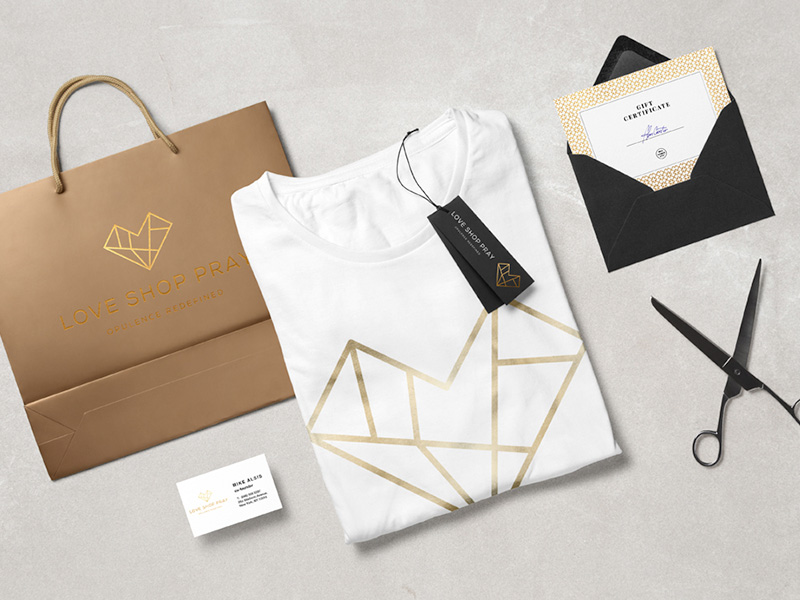Spellbrand Blog
What Is Your Brand Future From 2020 Onwards?

Do you ever think about what your brand should be or should look like and feel like in the next two years, three years, five years, or even 10 years? Most businesses, most business owners, and most smaller brands don’t really think about that. But it is very fundamental to look at the future when it comes to brand management because brand management is about the development of the perception of your target audience in terms of your brand.
It’s not just about your products or your services. It’s not even about your customer service or brand identity visuals, your website, and things like that. This is about an overall vision. Even at the personal level, most people don’t sit down periodically and assess what’s going on in their lives. Where are they? Where have they come from? And where are they heading? Most people don’t do that because it is a very difficult exercise. You need to look at your flaws and your attributes. You need to be able to face the possibility that a lot of the things you’re doing may not be the right things or the right way of doing things. The same goes for brands. Your marketing might be inconsistent. Your brand story may be inconsistent with your brand values and your products and services may not be aligned at all with your brand story. There are a lot of variables and without evaluating, without sort of taking a look periodically doing a brand audit, and also without thinking about the future, it’s going to be tough for your brand to actually go to the blue ocean.
To break through, to leave your competition behind, and to stop looking at your competition without this kind of forward-thinking vision, is going to be difficult.
So how do you do it? How do you think about the future?
First of all, you need to look at your brand story, not your origin story – your origin story is how your brand came about what you did. It has a place in your brand development and your brand marketing. But a brand story is a story that communicates who your brand is, what your brand is, what you’re all about to your target audience, and aligns with their worldview.
 Case Study: Check out this detailed case study of one of our clients for whom we had created a robust brand story and then translated that into a compelling visual identity. Communicating your brand story effectively will do wonders for your bottom line. Check out this case study.
Case Study: Check out this detailed case study of one of our clients for whom we had created a robust brand story and then translated that into a compelling visual identity. Communicating your brand story effectively will do wonders for your bottom line. Check out this case study.
How would your brand story make sense in two years’ time? You need to keep a very close eye on what’s happening with your customers. Wow is the pandemic affecting your customers? How are global events affecting customers? What about innovation within your market segment? What about new companies coming with new products, new services, and alternate products? What if the problem your brand solves actually disappears? These are the things you need to look at.
You need to start with your customer archetype and buyer persona. I suggest you read the series I wrote on archetypes. I talk about all the different 12 different types of archetypes, what their attributes are, and how to identify your audience and how to match them with the kind of archetypes. Once you keep an eye on that, you can then sort of look at your brand story and say, does my brand story makes sense? Your origin story is not going to change but your brand story can change and should change depending on what’s happening with your target audience because the aim is to always align with your target audience worldview.
So today, sit down, think through, take a look at your brand. Even if it’s a one-person brand – even if you just have a few clients or just starting out, sit down, think through, identify the archetype. Identify what’s going on with your target audience, your customer segment, your buyer personas. It’s not always about your service or your product. It’s not about your competition. It is about your buyers and their worldviews, their mindsets, their psychology.
The psychology of your customers is the single most important thing that determines the success of your brand, the revenue, and the profits.

Mash Bonigala
Creative Director & Brand Strategist
With 25+ years of building brands all around the world, Mash brings a keen insight and strategic thought process to the science of brand building. He has created brand strategies and competitive positioning stories that translate into powerful and stunning visual identities for all sizes of companies.
Featured Work
See Our Work in Action
Real brands, real results. Explore how we've helped businesses transform their identity.
Client Love
What Our Clients Say
Don't just take our word for it. Hear from the brands we've worked with.
Sue Politte
Success In Focus
"Love it! My brand identity and logo helps quickly communicate what I do. I coach very busy business leaders who want to take their organization to the next level and are tired of all the things that are slowing things down or blocking progress. My brand identity needed to grab visual attention and communicate quickly that I help my clients get focus so they gain and build success. My new brand will help my potential clients identify with me. Thank you!!!!"
Ernest Bannister
M.O.R.E
"My experience with the Spell brand team has been nothing short of excellent. From the beginning Mash and team made me feel very comfortable with the design process. I am extremely happy with the results of my design and look forward to working with Spellbrand; exclusively! I have told many family, friends and peers about the great work the Spellbrand team has done in creating my design. Thanks again for all your patience and professionalism; I look forward to working with you in the future."
Keep Reading
Related Articles
Nov 19, 2025
What Do You Need To Start An Online Business
Discover the essential elements needed to start a successful online business. From branding and website design to capital and self-discipline, learn what it takes to launch and grow your digital venture.
Read MoreNov 19, 2025
What are paths and anchor points in Adobe Illustrator?
Master the fundamentals of paths and anchor points in Adobe Illustrator. Learn how these essential tools work together to create professional logo designs and vector graphics.
Read MoreNov 17, 2025
Use Of Color In Creating Logo Designs
Master the psychology of color in logo design. Learn how colors influence perception, build brand recognition, and create emotional connections with your audience.
Read More

